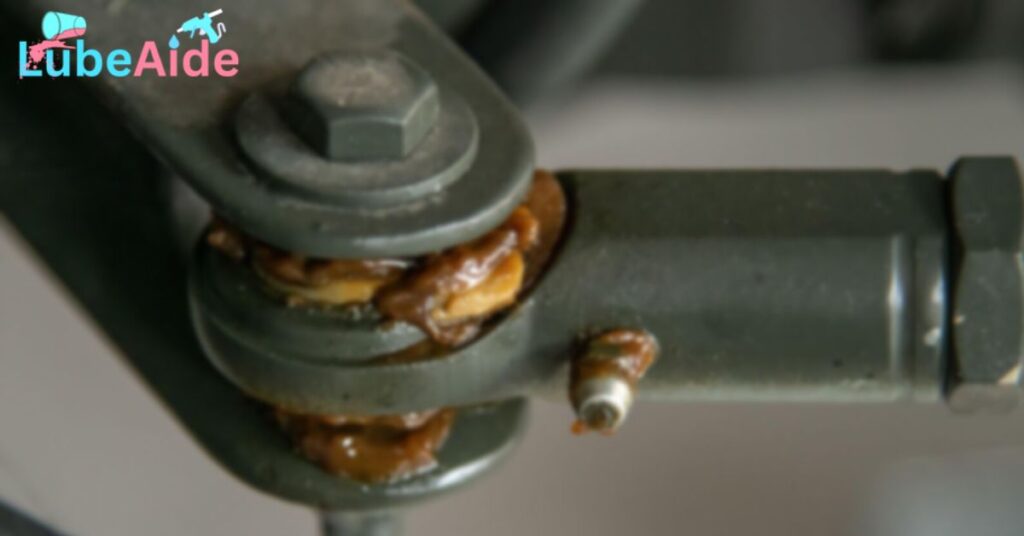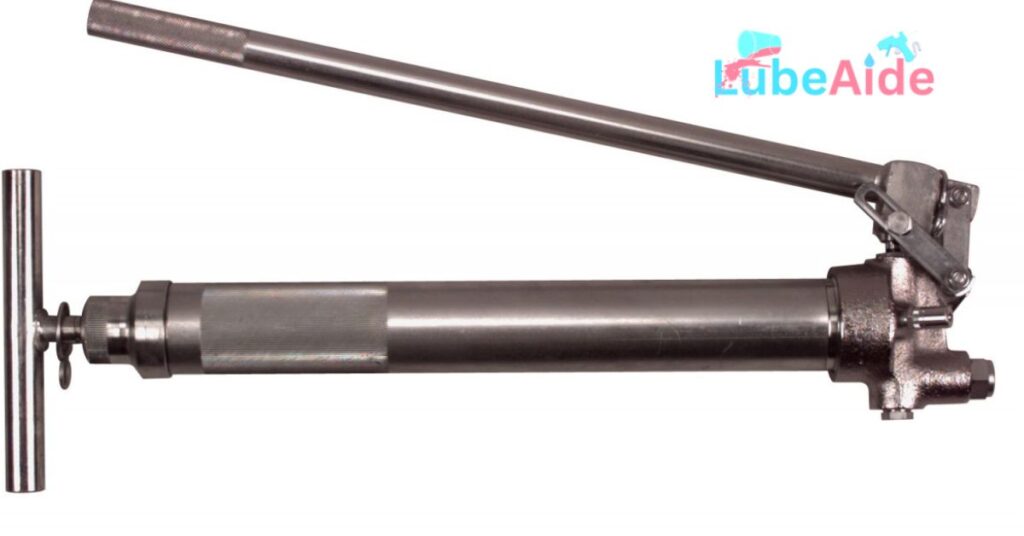How to fix blocked grease nipples? Fixes for blocked grease nipples can cause a lot of trouble when they become obstructed with dirt, debris, or hardened grease. This can lead to equipment failure, costly repairs, and downtime. Proper lubrication of equipment is essential to maintain and operate machinery. Lubrication reduces friction between moving parts, prevents wear and tear, and extends equipment life.
The right lubrication also improves machinery efficiency and performance. To prevent blocked grease nipples and maintain the proper functioning of machinery, it’s crucial to identify and fix the issue as soon as possible. Don’t worry if you’re facing this issue. Here are some proven methods to get them unblocked and keep your machinery running smoothly.
Identify the Symptoms of Blocked Grease Nipples

- Insufficient Lubrication: When grease nipples are blocked, lubrication can’t flow freely to the equipment’s moving parts. As a result, the equipment may start to make creaking or squeaking sounds, indicating the lack of proper lubrication.
- Uneven Wear: When the equipment doesn’t receive enough lubrication, it can cause wear and tear to the machinery. If you notice that your equipment’s parts are wearing unevenly, it could be due to blocked grease nipples.
- Noises: A lack of lubrication due to blocked grease nipples can cause creaking, squeaking, or grinding noises in the equipment as the moving parts rub against each other.
- Difficulty Greasing: If you experience difficulty pumping grease into the grease fitting, it could be due to blockages. Hardened grease, dirt, and debris inside the grease nipple can make it harder to pump grease.
- Grease Leaks: When the grease nipple is blocked, it can cause an excessive build-up of pressure, which can lead to grease leaks around the fitting. These leaks can indicate a blockage and should be addressed immediately.
- Contaminated Grease: When dirt or debris clogs the grease nipple, it can lead to contamination of the lubricant. Contaminated grease can reduce its effectiveness, leading to equipment damage and malfunction.
Choose the Right Lubricant
Selecting the right lubricant can prevent grease nipple blockages. Ensure the lubricant is compatible with your machinery, and avoid mixing different types of lubricants.
- Penetration: Choose a lubricant that has good penetration properties. It should be able to reach deep into the blocked grease nipple and loosen the hardened grease or debris.
- Avoid Mixing Lubricants: Mixing different types of lubricants can cause chemical reactions that can lead to blockages. Always use the same lubricant and avoid mixing different types.
- Solvent Properties: Look for a lubricant that has solvent properties. It should be able to dissolve the hardened grease and debris, making it easier to remove.
- Compatibility: Ensure that the lubricant you choose is compatible with the lubricant used in your machinery. Mixing incompatible lubricants can cause chemical reactions that can further damage the equipment.
- Viscosity: The viscosity of the lubricant should be suitable for the machinery’s operating conditions. If the lubricant is too thick or too thin, it can lead to blockages.
- Water Resistance: If the machinery is exposed to water, choose a lubricant that is water-resistant. Water can wash away lubricants and cause rust and corrosion, leading to blocked grease nipples.
- Additives: Lubricants may contain additives that can enhance their performance. Look for a lubricant with additives that are appropriate for your machinery and operating conditions.
How to Fix Blocked Grease Nipples – Step-by-Step Guides

- Clean the Grease Nipple: Use a wire brush or a pin to clean the grease nipple’s opening. It will remove any dirt or debris and improve lubricant flow.
- Apply Heat: Applying heat can melt any hardened grease or debris, making it easier to remove blockages. You can use a heat gun or a propane torch for this purpose, but be cautious and avoid overheating the equipment.
- Use a Grease Fitting Cleaner: Grease fitting cleaners are available in the market that can dissolve any hardened grease or dirt inside the grease nipple. Follow the manufacturer’s instructions while using the cleaner.

- Use a High-Pressure Grease Gun: If the blockage is caused by a build-up of old grease, using a high-pressure grease gun can help force the old grease out and clear the blockage.
- Replace the Grease Nipple: If the grease nipple is severely damaged or has been worn out over time, it may need replacement. Use a thread gauge to ensure the new nipple has the correct thread size and pitch.
- Schedule Regular Maintenance: Preventative maintenance is crucial to avoid blocked grease nipples. Schedule regular inspections and cleaning of your equipment to prevent any future issues.
- Check for Other Blockages: If the grease nipple remains blocked, check for other blockages in the grease lines or fittings.
- Seek Professional Help: If you’re unsure how to fix blocked grease nipples, seek professional help from a certified technician. They can diagnose and repair any issues with your machinery.
FAQ About how to fix blocked grease nipples
What Do I Do if My Grease Fitting Won’t Take Grease?
If your grease fitting won’t take grease, first check to ensure that you are using the correct grease for your machinery. If you are using the correct grease and still having issues, try cleaning the fitting with a small wire brush to remove any dirt or debris that may be blocking it. If this does not work, you may need to replace the fitting altogether.
How Do You Unclog a Grease Point?
To unclog a grease point, first, remove any excess grease from around the fitting. Next, use a small wire brush to clean the fitting and remove any dirt or debris. If this does not work, you can try using a specialized grease fitting tool, such as a fitting cleaner or a high-pressure grease gun, to force the blockage out of the fitting.
How Do I Know if My Grease Nipples Are Blocked?
One of the most common signs that your nipples are blocked is that the grease will not flow freely when you attempt to lubricate your machinery. You may also notice that the grease fitting appears to be clogged with dirt or debris, or that the machinery is making unusual noises.
Can I Still Use My Machinery if the Grease Nipples Are Blocked?
Using machinery with blocked grease nipples can lead to serious performance issues and even cause permanent damage to your machinery. It’s important to fix the issue as soon as possible to ensure that your machinery is running smoothly and efficiently.
Can I Prevent Grease Nipples From Getting Blocked in the Future?
One of the best ways to prevent it from getting blocked is to establish a regular maintenance schedule that includes cleaning and inspecting your machinery’s nipples. You can also use high-quality, recommended grease and ensure that it is applied in the correct quantities and intervals.
How Often Should I Check My Machinery’s Grease Nipples for Blockages?
The frequency at which you should check your machinery’s grease nipples for blockages will depend on a variety of factors, such as the type of machinery you have and how frequently it is used. However, a general rule of thumb is to inspect your nipples every six months to ensure that they are clean and functioning properly.
Tips and Tricks to Prevent Grease Nipple Blocked in Future
- Establish a regular maintenance schedule.
- Use high-quality grease.
- Apply grease in the correct quantities and intervals.
- Clean the area around the grease nipple before lubricating.
- Use specialized grease fitting tools.
- Store your machinery properly.
Conclusion
It is important to promptly address blocked grease nipples to maintain the smooth functioning and longevity of your equipment. Symptoms of blocked nipples such as insufficient lubrication, noises, uneven wear, difficulty greasing, grease leaks, and contaminated grease should be identified and addressed promptly. Choosing the right lubricant is crucial, as it should have good penetration and solvent properties, be compatible with your machinery, and have the appropriate viscosity, water resistance, and additives. By applying the lubricant to the blocked grease nipple using a grease gun and allowing it to work its way into the blockage, you can effectively fix blocked grease nipples and ensure the efficient functioning of your equipment.
Related Topic:
- When to Use White Lithium Grease on Rubber Bushings
- How To Remove Grease From Hands And Nails
- Where to Put Dielectric Grease on Spark Plugs
- What Happens If You Don’t Grease Brake Pads
- Why Does Grease Gun Leak: Troubleshooting Guide
- Different Types of Grease
- How to Depressurize a Grease Gun for Storage
- how to get air out of a grease gun
- what happens if you don’t grease your ball joints

